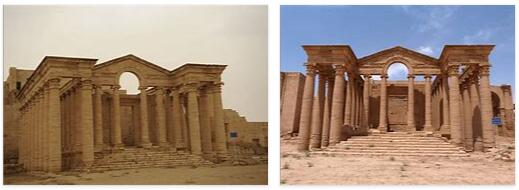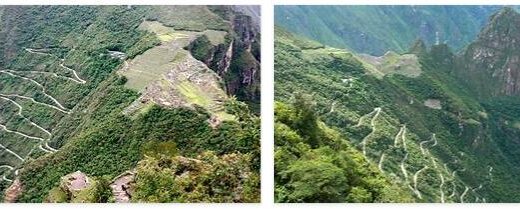Iraq World Heritages
Erbil Citadel (World Heritage)
The citadel of Erbil is a fortified settlement hill (tell) with an almost oval floor plan in Erbil, the autonomous region of Kurdistan in northern Iraq. The facades of buildings from the 19th century give the impression of a continuous and impregnable wall that towers over today’s megacity.
The citadel has a special fan-shaped floor plan, which refers to the late Ottoman phase of Erbil. Historical documents – partly as text, partly iconographic – document the long history of the settlement. The name Erbil refers to Arbela, the important political and religious center of Assyria. The archaeological finds and research suggest that the hill hides artifacts of previous settlements in its various layers.
Erbil Citadel: Facts
| Official title: | Citadel of Erbil |
| Cultural monument: | Settlement area with archaeological finds from thousands of years of continuous settlement as well as a fortified part of the old town (citadel) with numerous renovations and extensions over the centuries |
| Continent: | Asia |
| Country: | Iraq |
| Location: | Erbil |
| Appointment: | 2014 |
| Meaning: | The citadel of Erbil is considered to be one of the longest continuously inhabited places in the world. The award as UNESCO World Heritage recognizes this unique role of the old town of Erbil. |
Samarra Archaeological City (World Heritage)
In the 9th century, Samarra was the capital of the Abbasid Caliph dynasty, whose influence extended to Tunisia and Central Asia. Only a small part of the ancient Samarra has been excavated so far. The remains attest to the high culture on an architectural and artistic level. Outstanding monuments from Samarra’s heyday are the Great Mosque with the spiral minaret and the Caliph’s Palace. The world heritage site has been on the red list since it was named.
Archaeological city of Samarra: facts
| Official title: | Archaeological city of Samarra |
| Cultural monument: | Ruins of the Abbasid capital Samarra north of today’s city; Residence of the caliphs from 838-892 (founded by Caliph Mutassim) after uprisings in Baghdad, rule of the Abbasid Caliph dynasty (750-1258) over the largest Islamic empire of this time, extending from North Africa to Central Asia; archaeological site of the – only partially uncovered – residential town over a length of 41.5 km and a width of four to eight kilometers; Buildings among others: Great mosque (240 × 156 m, built from 847-861), associated 52 m high spiral minaret (»Malwija«), Abu Dulaf mosque (around 860), Balkuwarapalast (854-859), great caliph’s palace Beit al- Khalifa (1.75 km²), octagonal mausoleum (after 862); Finds of extensive Samarra ceramics, presumably Syrian glass, Chinese porcelain, wall paintings and stucco decoration; |
| Continent: | Asia |
| Country: | Iraq |
| Location: | Samarra, 110 km north of Baghdad on the left bank of the Tigris |
| Appointment: | 2007 |
| Meaning: | Unique historical testimony to the Abbasid rule; only capital of a bygone Islamic empire with well-preserved architecture including floor plan and works of art; Site with some of the largest mosques and palaces in the Islamic world; impressive example of early systematic urban planning; Document of a historically new type of mosque construction |
Assur (World Heritage)
The city of Assur was in the middle of the 3rd millennium BC. Inhabited. From the 14th to the 9th century BC It was the capital of the Assyrian empire. In the 7th century BC It was founded by the Medes king Kyaxares II. destroyed. Once again, Assyria reached from the 2nd century BC It was important as a Parthian administrative center until the 3rd century AD, until it was destroyed again by Shapur I. Temple and palace precincts have been excavated by German archaeologists since the late 19th century. The world heritage site has been on the red list since it was named.
Assur: facts
| Official title: | Assyria |
| Cultural monument: | First traces of settlement from the middle of the 3rd millennium BC Chr.; Capital of Assyria from the 14th to the 9th century BC BC (named after the city and empire god); continued to be the religious center of the Neo-Assyrian Empire after the relocation of the seat of government; 614 BC Conquered and destroyed by King Kyaxares; Resettlement in the 1st century BC Chr.; Renewed importance as a Parthian administrative center in the first and second centuries AD; including agora with public buildings, palace and sanctuary for the god Assor |
| Continent: | Asia |
| Country: | Iraq |
| Location: | Assur, about 120 km north of Baghdad |
| Appointment: | 2003 |
| Meaning: | Important archaeological site; outstanding testimony to the development of architecture from the Sumerian to the Assyrian times |



